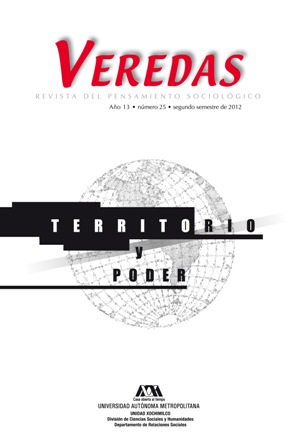Aritmética política del proceso electoral en México, 1997-2012
Abstract
This article discusses the federal elections for President in 2012 and of Congress by the principle of relative majority in the elections of 2009 and 2012, using those of 1997-2003 as a point of comparison. By means of statistical analysis, it studies the rate of voter participation and the election results obtained by political parties. Voter turnout in the 2000-2006 elections is compared with that of 2006-2012 using the annual average growth rate: 1) from the list of registered voters and 2) the growth rate of the total vote. These figures show a very high growth rate for the total vote in 2006-2012, higher than that seen in 2000-2006; however, the increase in registered voters was very low in comparison to 2000-2006, thereby resulting in a high rate of participation in the July 1, 2012 election. In the 2012 presidential elections, although the PRI allied with the Partido Verde Ecologista obtained the largest percentage of votes with a difference of just over 6% from the alliance of the PRD, PT and Convergencia parties, the significant weight carried by minor parties in these coalitions –the Partido Verde in the case of the PRI; the PT and Convergencia parties with the PRD– is notable. In the federal congressional elections by relative majority in the 2009 and 2012 elections compared to those from 1997-2003, again we find the majority of representatives obtained by the PRI in 2012 closely related to what is called the “hard” vote. In the case of the PRI, we see that the hard or stable party vote is strongly associated with the corporatist nature of this party due to its authoritarian history of the past; however, statistical analysis underscores the fact that the PRI majority in Congress is currently mainly due to its coalition with the Partido Verde, which leads us to consider a decline of the PRI party hard vote beginning in the 2012 elections. State-level analysis allows for further study of the phenomenon of hard votes.





